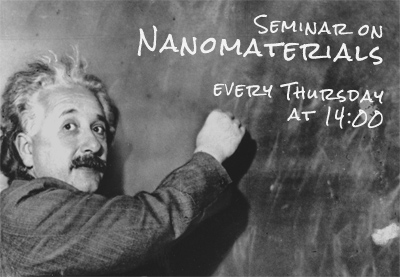Nanoseminar
Group of Structure analysis at the Department of Condensed Matter Physics
of Charles University and MGML has a pleasure to invite you to attend the seminar on nanomaterials: Physics, Technology, Applications
on 16th May 2024 at 14:00
at Faculty of Mathematics and Physics of Charles University, Ke Karlovu 5, 121 16 Praha 2
Lecture room F2
Václav Petříček
Institute of Physics, Czech Academy of Sciences
Modulated crystals – complication or challenge?
Václav Petříček » Modulated crystals – complication or challenge?
Institute of Physics, Czech Academy of Sciences
Location: F2
The fact that the investigated crystalline substance could be modulated is a nightmare for many crystallographers. The main obstacle to understanding modulated structures is the need to use multidimensional space. However, the use of multidimensional space follows directly from the generalization of methods used to study standard structures.
The modulated structure can be easily detected from the diffraction pattern. Here, sharp spots called satellite reflections can be observed in addition to the dominant diffraction spots (main reflections). Three indices related to the reciprocal lattice derived from the main reflections cannot index such reflections. Nevertheless, these spots are regularly distributed in space and can be indexed by adding one or more vectors to the reciprocal lattice.
Standard structure analysis usually describes the structure by the positions of individual atoms, the occupation factors, and isotropic or anisotropic atomic displacement parameters. The structure model of a modulated crystal is more complicated as some structure parameters must be described by modulation functions, which take a different form for each structure atom. The modulation function can be expanded into a Fourier series, and then the expansion coefficients are new structure parameters.
In cases where the purpose of structure analysis is just the characterization of a newly prepared substance that does not have any significant physical trying to prepare an analogous structure that would not be modulated is not out of the question. However, the situation is entirely different in cases where the crystal has significant physical properties. Perhaps the best examples come from the field of magnetic structures. For magnetic structures, the concept of symmetry is extended by the symmetry of magnetic moments, which also includes the so-called time inversion. On the other hand, the main principles of the solution remain the same as for modulated structures.
*corresponding author: e-mail: petricek@fzu.cz


